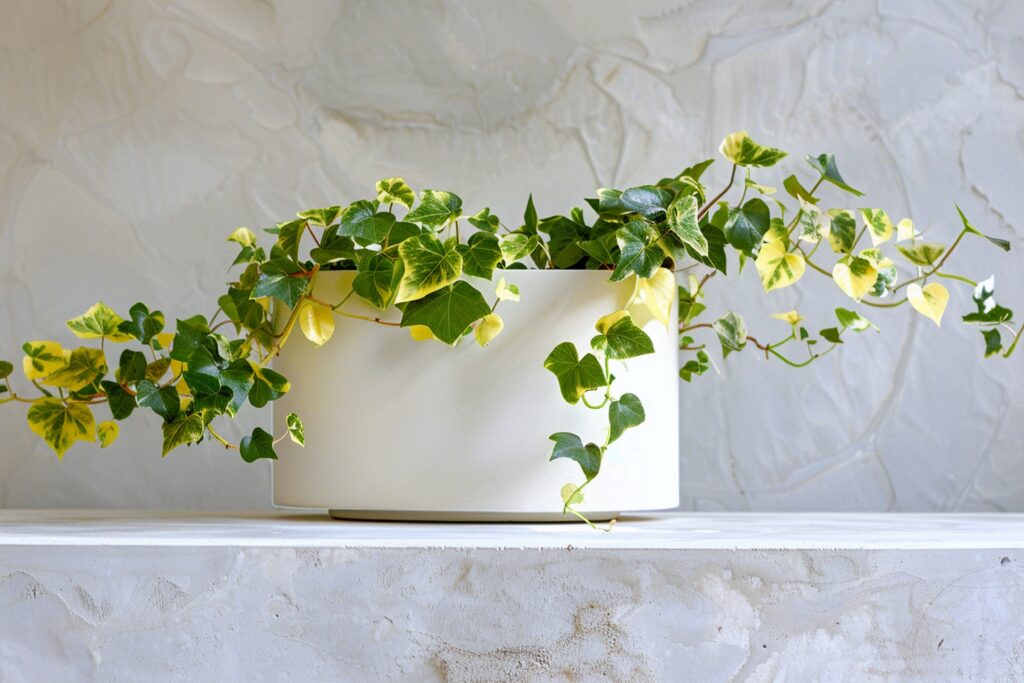Creating a minimalist plant shelf embraces the philosophy that less truly is more. By pairing thoughtfully selected plants with clean, simple shelving, you can create a sophisticated botanical display that enhances your contemporary design aesthetic without overwhelming the space. This approach celebrates both negative space and intentional arrangement, allowing each plant to shine as a living sculptural element.
The Principles of Minimalist Plant Display
Your minimalist plant shelf can transform your home by introducing greenery while maintaining a clean look.
Understanding the core tenets of minimalism allows you to create plant arrangements with maximum impact through careful restraint.
Key Elements of Minimalist Plant Styling
- Intentional negative space that frames and highlights each plant
- Limited color palette typically featuring whites, blacks, grays, and natural materials
- Clean lines and simple forms in both shelving and plant selections
- Quality over quantity with focus on specimen plants rather than collections
- Thoughtful asymmetry that creates visual balance without perfect symmetry
This approach not only creates a calm, uncluttered aesthetic but also simplifies maintenance by making each plant visible and accessible.
Selecting the Ideal Minimalist Plant Shelf
The foundation of your display begins with choosing shelving that embodies minimalist design principles.
Shelving Characteristics for Contemporary Design
- Simple construction without ornate details or visible hardware
- Clean, straight lines or gentle curves without decoration
- Floating installation that eliminates visible brackets where possible
- Limited material palette focusing on one or two complementary materials
- Precise craftsmanship with perfect joins and smooth finishes
Recommended Shelving Types for Minimalist Displays
- Floating shelves in white, black, or natural wood
- Ladder shelves with thin frames and simple platforms
- Wall-mounted wire shelving with clean geometric lines
- Glass or acrylic shelving for an almost invisible display surface
- Modular cube systems arranged with intentional spacing
Choosing Low-Maintenance Plants for Clean Aesthetics
Plant selection is crucial for maintaining minimalist appeal over time.

Ideal Plant Varieties for Minimalist Styling
- Snake plants (Sansevieria) with strong vertical lines
- ZZ plants (Zamioculcas zamiifolia) with naturally symmetrical growth
- Rubber plants (Ficus elastica) with bold, simple leaves
- Philodendron varieties with architectural leaf forms
- Air plants (Tillandsia) requiring no soil or traditional containers
Selection Criteria for Minimalist Plant Displays
When choosing plants, prioritize these characteristics:
- Architectural form with strong shapes and defined structure
- Slow growth habits that maintain intended scale and proportion
- Clean foliage that doesn’t shed or require frequent grooming
- Drought tolerance for reduced maintenance needs
- Visual interest as standalone specimens
Container Selection for Cohesive Indoor Styling
In minimalist plant displays, containers are as important as the plants themselves.
Container Guidelines for Contemporary Design
- Simple geometric forms without patterns or decorative elements
- Neutral color palette featuring whites, blacks, grays, and natural materials
- Consistent style across the display or deliberate limited variation
- Appropriately scaled to balance with both plant and shelf proportions
- High-quality materials like ceramics, concrete, or matte metals
Avoid mixing too many container styles, which can create visual noise counter to minimalist principles.
Arrangement Techniques for Balanced Displays
The true art of minimalist plant styling lies in thoughtful arrangement that creates visual harmony.
Composition Strategies for Clean Visual Impact
- Rule of thirds placement rather than centered positioning
- Varied heights without crowding or overlapping
- Grouping in odd numbers (often single specimens or groups of three)
- Deliberate asymmetry that still feels balanced
- Consistent spacing between elements for visual rhythm
Implementation Tips for Various Spaces
- For long shelves, resist the urge to fill the entire surface—embrace empty space
- Create “moments” of focus rather than continuous displays
- Consider seasonal rotation of featured plants rather than adding more
- Use plant placement to draw the eye to architectural features
- Remember that proper spacing improves plant health by allowing air circulation
Maintenance Strategies for Preserving Minimalist Appeal
The simplicity of minimalist displays requires consistent maintenance to preserve their clean aesthetic.
Practical Maintenance Approach
- Regular dusting of both plants and shelving surfaces
- Prompt pruning of any damaged or imperfect foliage
- Rotation for balanced growth to maintain sculptural forms
- Consistent care schedule to prevent stress signs on display plants
- Seasonal editing to remove plants that have outgrown their aesthetic role
By committing to these maintenance practices, your minimalist plant display will continue to enhance your contemporary space with natural elements while maintaining the clean, uncluttered aesthetic that defines minimalist design.
Evolving Your Display While Maintaining Minimalist Principles
Over time, your plant display can evolve without compromising its minimalist aesthetic.
Strategies for Thoughtful Evolution
- Replace rather than add when introducing new specimens
- Maintain consistent visual weight even when changing elements
- Consider seasonal adjustments that reflect natural cycles
- Periodically reevaluate the entire composition from different viewing angles
- Document arrangements you particularly like for future reference




